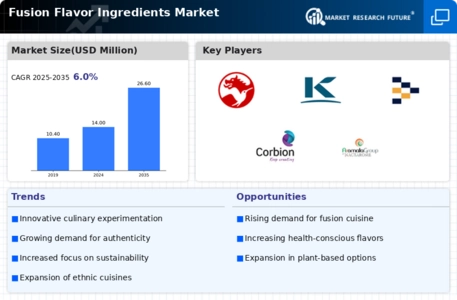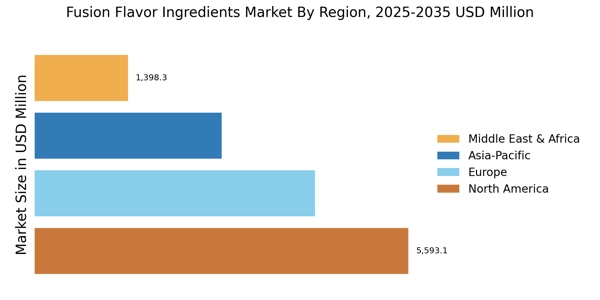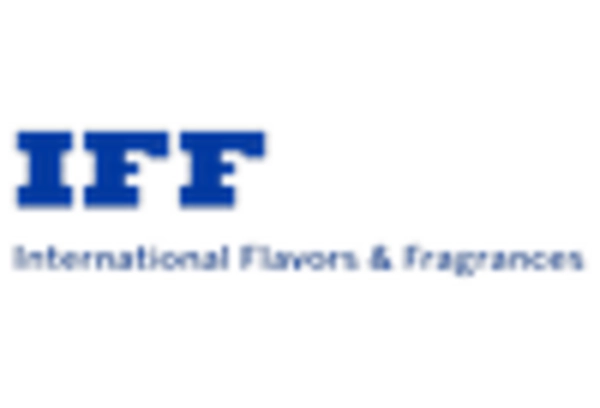Culinary Innovation
The Fusion Flavor Ingredients Market is currently experiencing a surge in culinary innovation, driven by the increasing demand for unique and diverse flavor profiles. Chefs and food manufacturers are experimenting with unconventional combinations, leading to the creation of novel dishes that appeal to adventurous consumers. This trend is reflected in the market data, which indicates a projected growth rate of approximately 8% annually over the next five years. As consumers seek out new dining experiences, the Fusion Flavor Ingredients Market is poised to benefit from this culinary exploration, as it provides the essential components for creating exciting and memorable flavors.
Health and Wellness Trends
In recent years, there has been a notable shift towards health and wellness, influencing the Fusion Flavor Ingredients Market. Consumers are increasingly seeking out flavors that not only tantalize their taste buds but also align with their health-conscious lifestyles. This trend is evident in the rising popularity of natural and organic flavor ingredients, which are perceived as healthier alternatives. Market data suggests that the demand for clean-label products is driving growth in this sector, with an estimated increase of 10% in sales of health-oriented flavor ingredients. As a result, the Fusion Flavor Ingredients Market is adapting to meet these evolving consumer preferences.
Sustainability Initiatives
Sustainability has emerged as a critical driver within the Fusion Flavor Ingredients Market. Consumers are increasingly concerned about the environmental impact of their food choices, prompting manufacturers to adopt sustainable sourcing practices. This shift is reflected in the growing demand for ethically sourced flavor ingredients, which are perceived as more responsible and environmentally friendly. Market data indicates that products labeled as sustainable are experiencing a sales increase of approximately 15%, highlighting the importance of sustainability in consumer decision-making. As a result, the Fusion Flavor Ingredients Market is likely to continue evolving to meet these sustainability expectations.
Technological Advancements
Technological advancements are playing a pivotal role in shaping the Fusion Flavor Ingredients Market. Innovations in food processing and flavor extraction techniques are enabling manufacturers to create more complex and appealing flavor profiles. These advancements not only enhance the quality of flavor ingredients but also improve production efficiency. Market Research Future suggests that the integration of technology in flavor development could lead to a reduction in production costs by up to 20%. As a result, the Fusion Flavor Ingredients Market is likely to benefit from these technological improvements, allowing for greater creativity and variety in flavor offerings.
Cultural Diversity and Globalization
The Fusion Flavor Ingredients Market is significantly influenced by cultural diversity and globalization. As populations become more interconnected, there is a growing appreciation for international cuisines and flavors. This trend has led to an increased demand for fusion flavors that blend traditional ingredients with modern culinary techniques. Market analysis indicates that the fusion cuisine segment is expanding rapidly, with a projected growth rate of 7% over the next few years. This cultural exchange not only enriches the culinary landscape but also drives innovation within the Fusion Flavor Ingredients Market, as manufacturers strive to create products that resonate with diverse consumer palates.


















Leave a Comment